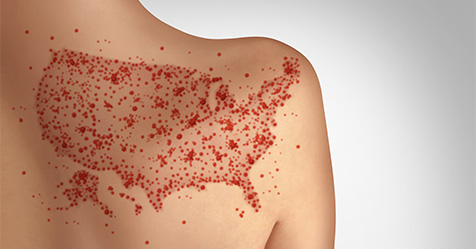Understaffed Hospitals for Infection Prevention and Control Have Higher Rates of Infection
Nearly four in five hospitals are not staffed at sufficient level to keep patients safe from preventable infections
Inadequate infection prevention and control staffing levels are associated with higher rates of healthcare-associated infections, according to a new study published today in the American Journal of Infection Control.
The study, conducted by the Association for Professionals in Infection Control and Epidemiology (APIC) Center for Research, Practice & Innovation, summarized a pilot project to evaluate a new online calculator aimed at providing facility-specific recommendations for infection prevention staffing.
Infection prevention and control programs with staffing levels that are below expected demonstrated significantly higher rates of central line-associated bloodstream infections (CLABSI), catheter-associated urinary tract infections (CAUTI), Clostridioides difficile infections, and colon surgical site infections.
For example, 25% of facilities staffed at lower-than-expected staffing levels had elevated CAUTI rates, as compared to 7% of hospitals with expected or above expected staffing levels.
In an analysis of 390 acute care hospitals that participated in the study, the calculator tool identified nearly 80% as having insufficient staff levels in this area.
Historically, hospitals used benchmarks that relied on a ratio of infection preventionists (IPs) per inpatient bed (ranging from 69 to100 beds in the last decade). This one-size-fits-all method for calculating appropriate IP staffing levels is inadequate and outdated.
Additional details from the study include:
- Study hospitals ranged in size from eight beds to more than 2,000 beds.
- Staffing levels ranged from one IP per 40 beds at small hospitals (fewer than 25 beds) to a peak of one IP per 161 beds in larger hospitals (301 to 400 beds).
- More than 85% of respondents who believed their staff levels were inadequate came from hospitals found to have lower than expected IP staffing.
“This study lays to rest any doubt about the critical need for appropriate levels of IP staffing, identifying an undeniable link between sufficient infection prevention and control resources and patient safety, as measured by rates of healthcare-associated infections,” said Tania Bubb, PhD, RN, CIC, FAPIC, 2024 APIC president.


